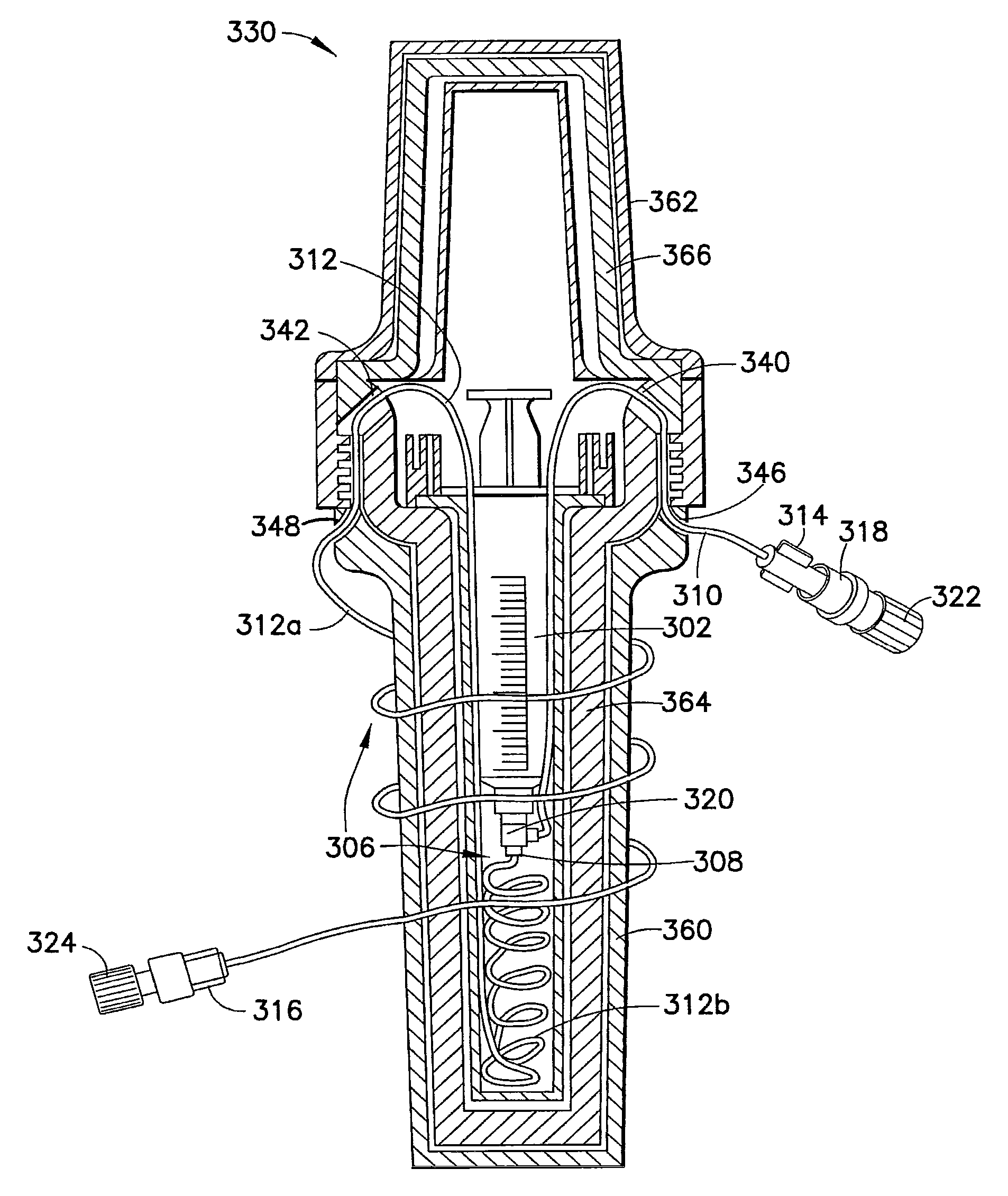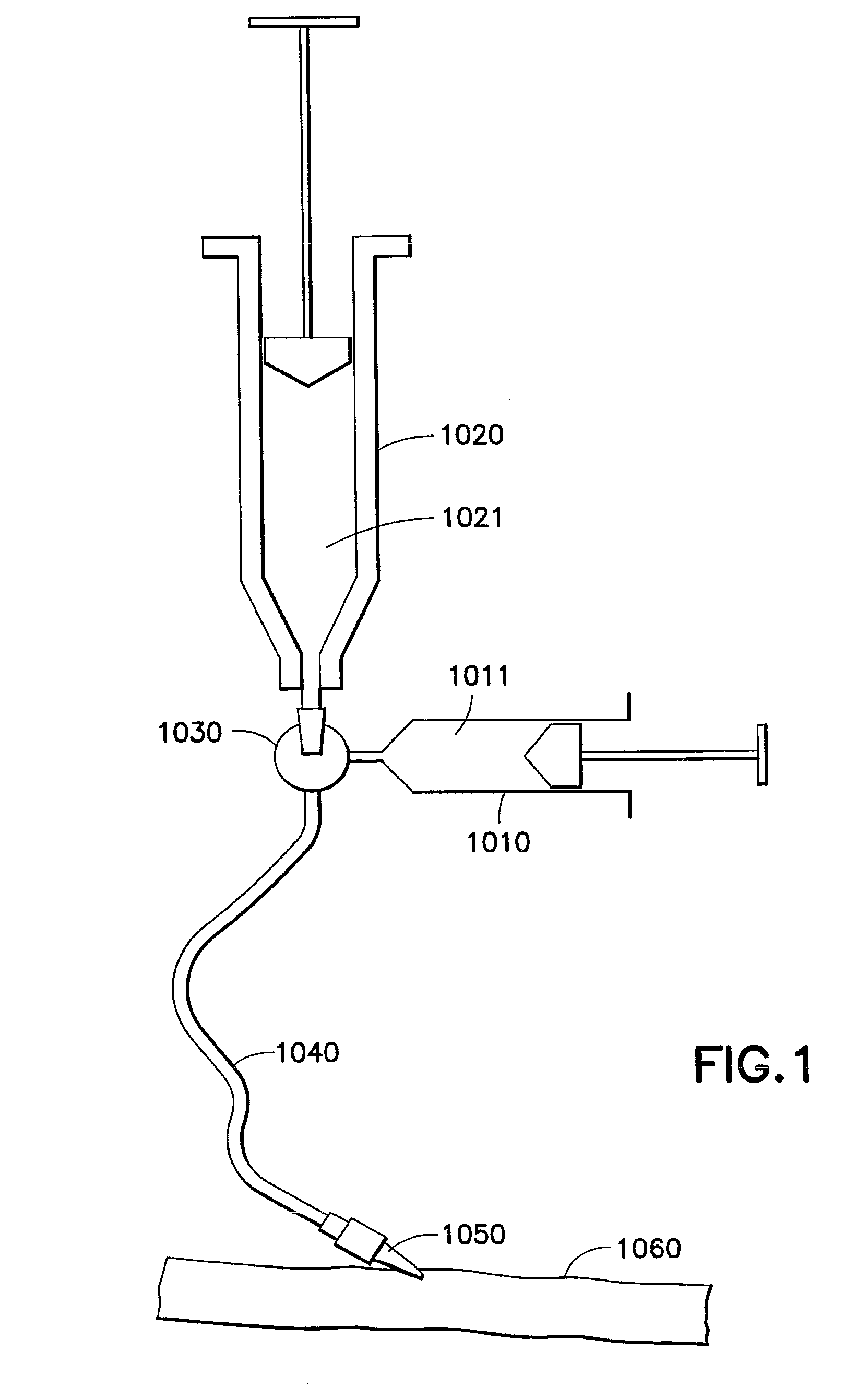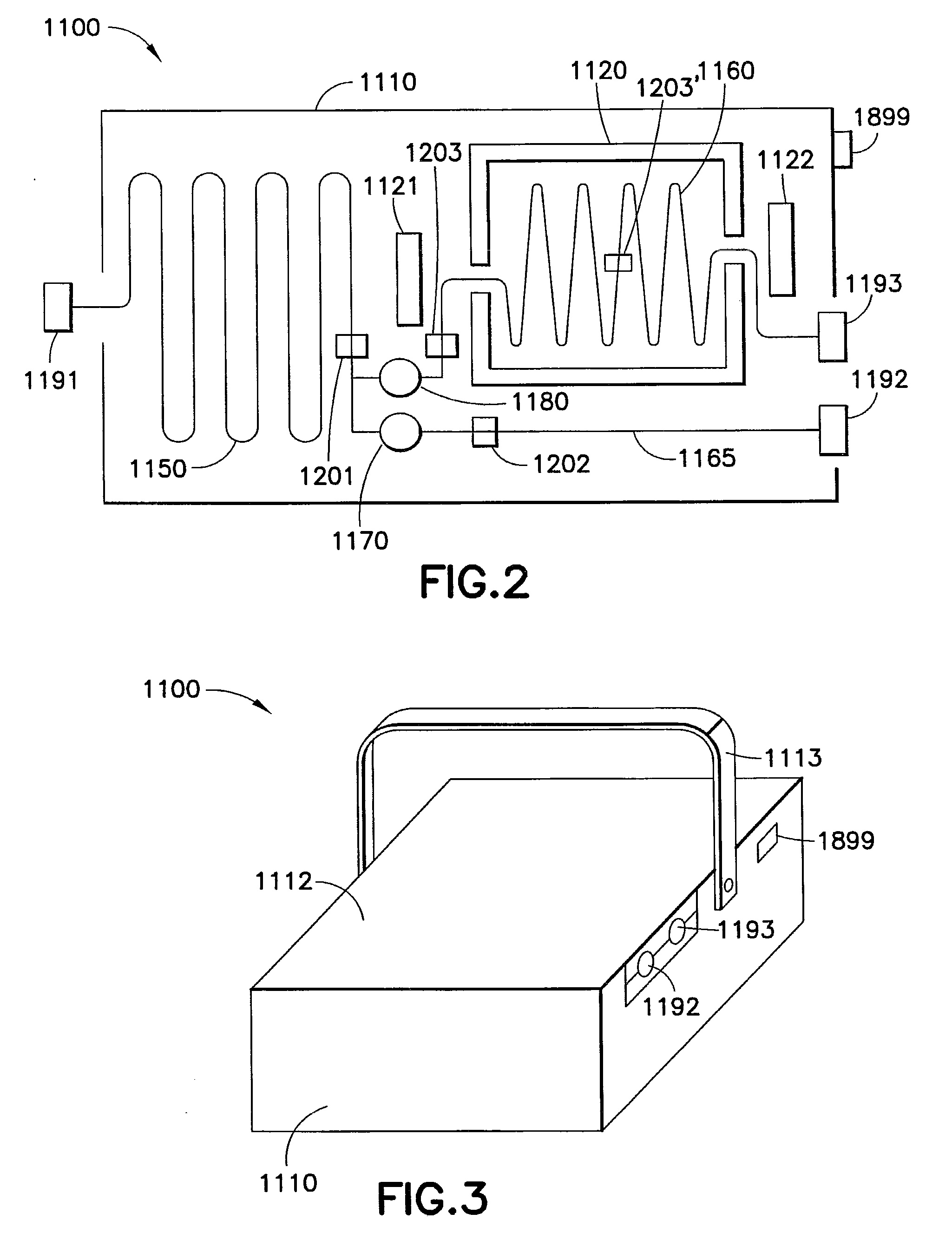Apparatus and Methods for Delivery of Fluid Injection Boluses to Patients and Handling Harmful Fluids
a technology for fluid injection and apparatus, applied in the field of pharmaceutical substances and drug administration, can solve the problems of radiopharmaceutical agents used in imaging procedures and therapeutic procedures, hazardous to attending medical personnel, toxic agents,
- Summary
- Abstract
- Description
- Claims
- Application Information
AI Technical Summary
Benefits of technology
Problems solved by technology
Method used
Image
Examples
Embodiment Construction
[0053]For purposes of the description hereinafter, spatial orientation terms, if used, shall relate to the referenced embodiment as it is oriented in the accompanying drawing figures or otherwise described in the following detailed description. However, it is to be understood that the embodiments described hereinafter may assume many alternative variations and configurations. It is also to be understood that the specific devices, features, and components illustrated in the accompanying drawing figures and described herein are simply exemplary and should not be considered as limiting.
[0054]First pass cardiac imaging studies in the prior art involve quickly hand injecting a nuclear medicine tracer or radioisotope into a tubing connected to a patient's vein then quickly injecting a quantity of saline to flush the radioisotope from the tubing and veins of the patient. A series of images is taken as the isotope flows through the right heart, pulmonary arteries, lungs, pulmonary veins, le...
PUM
 Login to View More
Login to View More Abstract
Description
Claims
Application Information
 Login to View More
Login to View More - R&D
- Intellectual Property
- Life Sciences
- Materials
- Tech Scout
- Unparalleled Data Quality
- Higher Quality Content
- 60% Fewer Hallucinations
Browse by: Latest US Patents, China's latest patents, Technical Efficacy Thesaurus, Application Domain, Technology Topic, Popular Technical Reports.
© 2025 PatSnap. All rights reserved.Legal|Privacy policy|Modern Slavery Act Transparency Statement|Sitemap|About US| Contact US: help@patsnap.com



